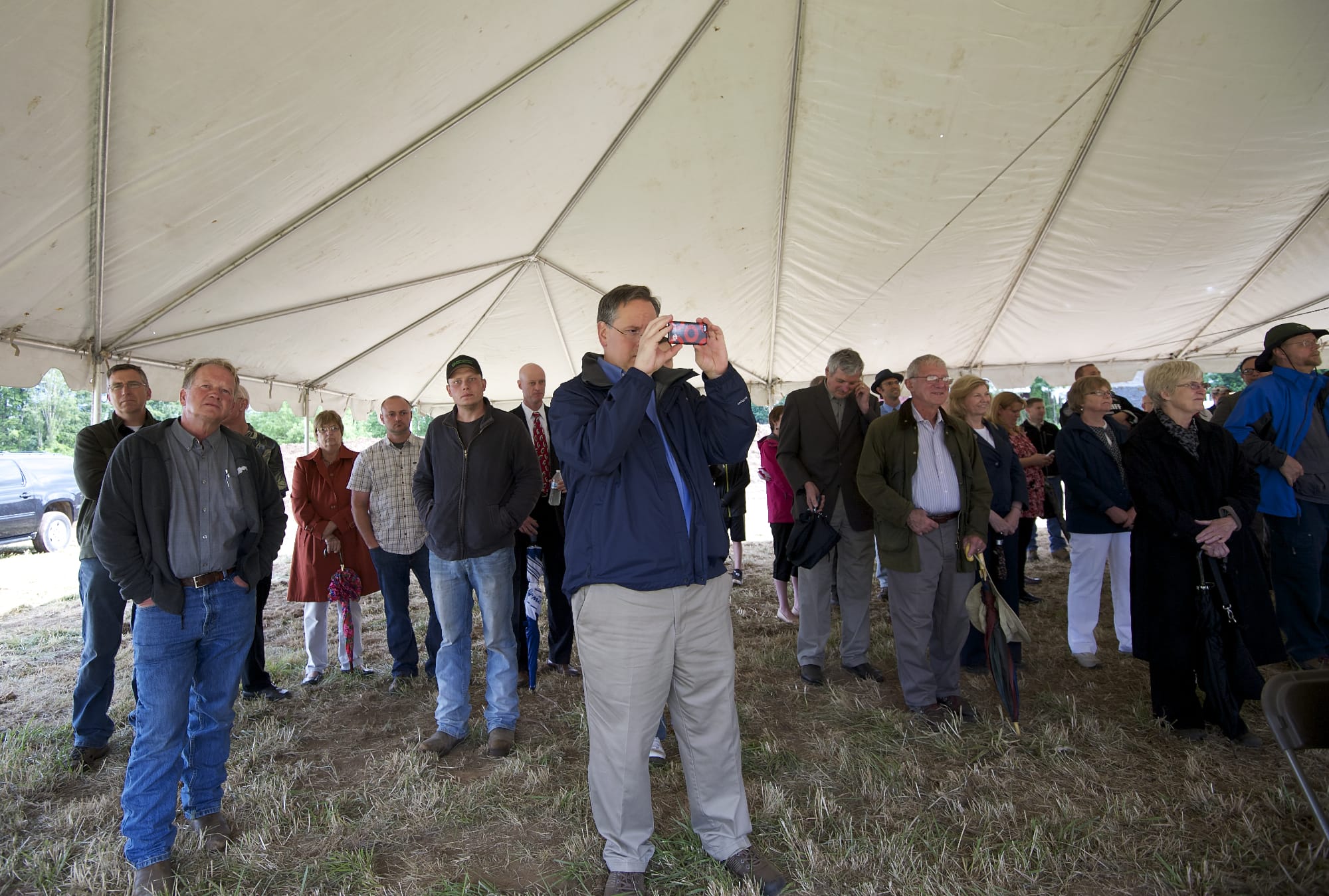Rising global demand for high-tech equipment that enables scientists to study fish is prompting the local expansion of Smith-Root, Inc., a manufacturer of electro-fishing devices.
The Vancouver-based company, celebrating its 50th year in business, held a groundbreaking ceremony Thursday to highlight construction of its new, 30,000-square-foot complex at 16605 N.E. 50th Ave. in Salmon Creek.
The new site, which will be built in two phases and fully completed in May or June 2015, will give the company an additional 10,000 square feet of space. It will include a new biological research lab, more space for fabrication machinery and room for future growth.
The building is going up as Smith-Root has bulked up its staff. Eighteen months ago, the company employed about 40 people. After adding 17 scientists, engineers and support staff, the company now hums with a total of 57 employees. Smith-Root generates about $10 million to $12 million in annual revenue. The company’s global reach includes branch offices in Europe and Australia.
“We anticipate hiring additional employees in the next several months as space becomes available,” Katherine Harper, the company’s operations director, said in an email to The Columbian.
It’s all part of Smith-Root’s response to burgeoning world demand for the company’s offerings, including everything from electrofishing boats to fish guidance and deterrence systems, said Patrick Cooney, Smith-Root’s communications manager and a certified fisheries scientist.
“The world has become much more aware of environmental issues,” Cooney said, “and people are putting a precedent on conserving fisheries globally.”
Thursday’s groundbreaking ceremony welcomed Washington Gov. Jay Inslee, other state and local elected offcials, Washington State University Vancouver leaders, and Smith-Root employees and families. Inslee said the jobs Smith-Root has added pay well and involve highly-skilled professionals. The state is working to ensure that students obtain the science, technology, engineering and math skills that are necessary to meet the future workforce needs of Smith-Root and similar companies, Inslee said.
‘In the field’
Smith-Root, founded by Dave Smith and Lee Root in Seattle in 1964, relocated to Vancouver in 1972. Currently, it operates in a cluster of three separate buildings, comprising a total of 20,000 square feet, at 14014 N.E. Salmon Creek Ave.
Building the new complex will give the company more room but also allow Smith-Root to move its design, production and fabrication departments all under one roof, Cooney said. That will “help better coordinate the efforts between the different teams,” he said.
The company also will still be near WSUV. “We’re simply switching from the south entrance to the east entrance,” Cooney said of Smith-Root’s positioning near the university’s campus. “We’ll maintain our proximity and close ties with researchers at WSUV.”
Likewise, relocating to a bigger building also puts Smith-Root next to the private Gardner School of Arts & Sciences, just off Northeast 50th Avenue in Salmon Creek. The company and the school have previously worked together on educational programs. That partnership will only deepen as Smith-Root invites students “to come over and learn about engineering, science and production,” Cooney said.
Smith-Root manufactures a full line of fisheries technology to complete a variety of tasks, including deterring invasive species, monitoring the health of fish, and boosting fisheries conservation. The company serves a range of customers, including private industry, nonprofits, and state and federal fish and wildlife departments.
The company makes electric fish barriers, for example. The hardware ranges from 1-meter diameter plastic culverts that protect lakes from invasive species to large-scale barrier systems that block invasive species from commandeering the Great Lakes while allowing the safe passage of commercial vessels.
Smith-Root’s electrofishing equipment — carried in a backpack, set up on shore or mounted on a boat — enables researchers to immobilize fish to weigh and measure them, and to relocate them so they may safely spawn.
The equipment delivers voltage in small, controlled doses to avoid harming fish, Cooney said.
“We are in the field the whole way with biologists,” he said.




